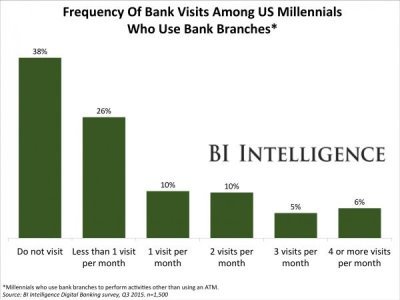Jeremie Averous's Blog, page 80
December 31, 2016
Happy New Year 2017
Happy New Year 2017 to all!
As usual on year end, let me share with you the 10 the most popular posts this year:
One of My New Adventures: CleanuC
What Makes Us Really Happy and Healthy in the Long Term
How We Constantly Underestimate the Role of Luck in Our Lives
Authenticity: How to Create Meaningful Connections over Social Networks
Why Discoveries Are Made by Questioning Answers
What the Facebook News Controversy Teaches Us About Impartiality
How America Becomes Sedentary When the World Becomes Nomadic
Why You Should Never Try to Anticipate the Reaction of Other People
Why a Crisis Could Be Better than a Slow Downfall
How People Buy More Experiences and Less Things

December 29, 2016
How the Collaborative Age Organization’s Network is Both Identity and Value
The Collaborative Age’s organization identifies with its network, but the network is more than that. Let’s look at it a bit more in detail.
 The network is composed of all stakeholders. It is from where the organization derives its direct revenue (clients) and where it creates its permanent value (collaboration between contributors). Some participants might be at some times clients and at other times contributors. Contributors may be full time or part time, or even occasional. They may have met or they may not have met. They may stay in touch with the organization loosely for some time and suddenly become very close contributors.
The network is composed of all stakeholders. It is from where the organization derives its direct revenue (clients) and where it creates its permanent value (collaboration between contributors). Some participants might be at some times clients and at other times contributors. Contributors may be full time or part time, or even occasional. They may have met or they may not have met. They may stay in touch with the organization loosely for some time and suddenly become very close contributors.
The network is the value of today’s organization. The network limits are a bit fuzzy and that is perfectly fine. The network is everything, and maintaining and expanding it should be the aim of all modern organizations, irrespective of if participants are within or outside the core organization.

December 27, 2016
What Constitutes an Organization’s Identity Today
In the Industrial Age, the identity of an organization was very much defined by its physical location and assets. In the Collaborative Age, the identity of an organization is rather its network.
 Industrial-Age organizations had definite geographical locations that belonged to it, and often linked to very large and unmovable capital investments. It allowed to define a border between what was inside and outside of the organization. It was rare and even sometimes forbidden to go back home with anything that belonged to the organization.
Industrial-Age organizations had definite geographical locations that belonged to it, and often linked to very large and unmovable capital investments. It allowed to define a border between what was inside and outside of the organization. It was rare and even sometimes forbidden to go back home with anything that belonged to the organization.
In the Collaborative Age, walls and geographical locations are not so important. They may exist as just the means to an end: improve collaboration, and will generally be somewhat temporary (as they are not associated with expensive capital investments). Rather the important asset of organizations is its network, both internally and externally to the organization. And it also forms it identity, because the organization is now akin to the network it fosters.

December 24, 2016
How Combining Human and Artificial Intelligence Might Be the Winning Combination
A lot gets written and debated about Artificial Intelligence these days. In that context, the recent report by the US National Science and Technology Council ‘Preparing for the future of Artificial Intelligence‘ is a must read.
 One area that has struck me in particular is the reference to exceptional performance of the combination of human and artificial intelligence when is comes to pattern recognition. An example: “In one recent study, given images of lymph node cells, and asked to determine whether or not the cells contained cancer, an AI-based approach had a 7.5 percent error rate, where a human pathologist had a 3.5 percent error rate; a combined approach, using both AI and human input, lowered the error rate to 0.5 percent, representing an 85 percent reduction in error.”
One area that has struck me in particular is the reference to exceptional performance of the combination of human and artificial intelligence when is comes to pattern recognition. An example: “In one recent study, given images of lymph node cells, and asked to determine whether or not the cells contained cancer, an AI-based approach had a 7.5 percent error rate, where a human pathologist had a 3.5 percent error rate; a combined approach, using both AI and human input, lowered the error rate to 0.5 percent, representing an 85 percent reduction in error.”
It seems increasingly that this combination of two different perspectives, ours and the other one we are creating using Artificial Intelligence, could open us new frontiers. Artificial Intelligence in that sense seems rather a useful tool to broaden our perspectives and capabilities.

December 22, 2016
How Creativity Might Stem From Satisfaction of Basic Needs, and Curiosity
To follow up on our exploration of creativity, the Scientific American paper ‘Where Creativity Comes From‘ makes the point that creativity occurs rarely in a very stressful environment where people have no time to seek opportunities or take the risk of inventing something new.
 Rather, creativity seems to happen rather in settings where the basic needs are satisfied or at least alleviated temporarily. This allows curiosity and exploration initiatives to happen. As the paper shows this is being demonstrated in a number of settings, both in human and animal colonies.
Rather, creativity seems to happen rather in settings where the basic needs are satisfied or at least alleviated temporarily. This allows curiosity and exploration initiatives to happen. As the paper shows this is being demonstrated in a number of settings, both in human and animal colonies.
Our previous post discussed that there needs to be a small amount of stress to foster creativity. Here we see that curiosity and exploration can only happen if basic needs are satisfied. This all brings us back to the conclusion of an optimum in between.

December 20, 2016
How Total Happiness is Not Conducive to Creativity
Being too happy makes one not so creative! That’s at least apparently the outcome of serious research quoted in this Quartz post ‘Scientists explain how happiness makes us less creative‘.
 The gist of the argument and of the findings is that “creativity calls on persistence and problem-solving skills, not positivity“. Hence, creativity would be found in rather tougher environments where problem-solving is paramount to survival.
The gist of the argument and of the findings is that “creativity calls on persistence and problem-solving skills, not positivity“. Hence, creativity would be found in rather tougher environments where problem-solving is paramount to survival.
It is a rather similar argument about the fact that expatriation and exposure to other cultures promote creativity: because problem-solving abilities are challenged significantly when moving to another country, plus exposure to other ways of thinking, there is a good fertile soil for creativity.
On the other hand there needs to be quite some protection afforded to allow for time and reflection that are involved in creativity. Extremely tough environments will not afford that. There must be some optimal spot in between perfect bliss and total disruption.
Conclusion: to achieve a creative environment, provide a protective setting but don’t pamper people too much!

December 17, 2016
How to Address the Paradox of Required Flawless Success
We are expecting from our leaders to be overachievers and at the same time to a flawless record of success. But wait! that’s not consistent.
 If a leader has achieved something of significant in his past life, he or she will have been criticized, hated. He or she will have faced failure and disappointments. The project they were working on might only have achieved a small part of its original (grandiose) goals. Thus, an effective leader will not have had a consistent flawless record of success and approval.
If a leader has achieved something of significant in his past life, he or she will have been criticized, hated. He or she will have faced failure and disappointments. The project they were working on might only have achieved a small part of its original (grandiose) goals. Thus, an effective leader will not have had a consistent flawless record of success and approval.
When electing or choosing our leaders we need to face this paradox. And we fall into the trap so often! In large companies it is often the quiet achiever that gets promoted (to avoid controversy). In politics, any failure at any point will be duly raised up to demonstrate incapability. Dictators will re-engineer their history to appear flawless.
As a note though valid flaws should not include improper behavior and language, lack of respect etc. This shows a flaw in character, not the impact of having tried something worthwhile. These are not always easy to distinguish from valid failures but they finish by coming out in a long campaign (cf. US presidential campaign).
Inspired by Seth Godin’s post – a must read! ‘The paradox of the flawless record‘.

December 15, 2016
How To Personally Network More Effectively
Our network is important for success and fulfillment. In her post ‘A Smarter Way to Network for Decision Makers‘, Valeria Maltoni reports “According to research conducted by Rob Cross and Robert Thomas, the executives who consistently rank in the top 20% of their companies in both performance and well-being have diverse but select networks —made up of high-quality relationships with people who come from several different spheres and from up and down the corporate hierarchy.”
 There is a way to network more deliberately so as to more effective. What I find particularly interesting is the need to have diverse networks. The quote above concentrates on a closed organization but of course networks need to transcend arbitrary boundaries and this principle is applicable to our personal network in general. It can be a particular network related to a religion, sport activity, children school, combined with one or several work-related networks.
There is a way to network more deliberately so as to more effective. What I find particularly interesting is the need to have diverse networks. The quote above concentrates on a closed organization but of course networks need to transcend arbitrary boundaries and this principle is applicable to our personal network in general. It can be a particular network related to a religion, sport activity, children school, combined with one or several work-related networks.
I firmly believe that a lot of the value I personally bring to people comes from my exposure to very varied industries, countries and practices. Having a number of very different networks creates a lot of value and many opportunities.
I am learning to be more deliberate about this diversity. What about you?

December 13, 2016
How Electronic Services Significantly Change the Service Value Chain
In the banking industry, it is estimated that 80% of the client value (i.e. fees) is still generated by the 5% face-to-face contact. The 95% client contact through internet and mobile does not generate much value. In a context of much lower returns in general for the financial industries, banks are confronted to a key dilemma: increase e-banking and convenience but without losing opportunity for creating revenue!
 Most younger customers never visit bank branches
Most younger customers never visit bank branchesThis is a typical example of the impact of the Fourth Revolution on institutions. Bringing services online is not just a transpose of the actual brick and mortar relationship and value chain. It creates the question of creating a whole new value proposition.
And it so happens as well that if simple transactions can easily be carried over to online interfaces, more complex transactions still require a more in-depth contact, either by phone or face-to-face. In the banking industry those transactions carry the most fees: investments and loans. But keeping branches open create significant fixed costs that see their return diminish. The manner of implementing those interactions in an online world still remains to be invented.
The main lesson for the moment is that by bringing current services and transactions online, believing that the value proposition will remain similar is an illusion. It will change significantly and it will need to be reinvented.

December 10, 2016
How Information Systems Are Increasingly Set Up by Everybody but the IT Department
“Kill that bulky IT department!”. That could be the war cry of many organizations these days as the influence and size of IT departments tend to diminish significantly. As a result, they don’t have the same regulation impact on investment in Information Technologies.
Two related changes are driving this transformation:
the move to the Cloud (and thus the lesser need for infrastructure setup and maintenance), and
the related fact that other departments can now spend directly for systems without any infrastructure infrastructure needs and thus without any prior authorization or even knowledge by the IT department
 According to Gartner, 38% of IT spend in companies is now out of the hands of the IT departments and this tends to increase significantly over time [reference: attended speech from CapGemini CEO in Oct 2016]. The marketing department in particular for BtoC industries, becomes a major client for information services.
According to Gartner, 38% of IT spend in companies is now out of the hands of the IT departments and this tends to increase significantly over time [reference: attended speech from CapGemini CEO in Oct 2016]. The marketing department in particular for BtoC industries, becomes a major client for information services.
This decentralisation has many positives. In particular it removes the centralizing controlling power of the CIO which was oftentimes excessive, even taking strategic decisions without proper understanding of the business impact. It allows specialist trades to implement the tools that they really require. On the other hand it opens the door to issues related to data consistency, possibilities of business intelligence, and all sorts of security-related issues for company data. Actual control of the expenditure may also become an issue as more and more cloud services are Opex based instead of being visible, centrally authorized Capex.
In any case, for us involved in providing specialist software (cf my company ProjectAppServices), it certainly means that all our marketing effort should be directly with the user, and the IT department is just an annoyance to avoid as much as possible.
Are you fully aware of this change? If your IT department still decides everything you are going into the wall. Time to change!





